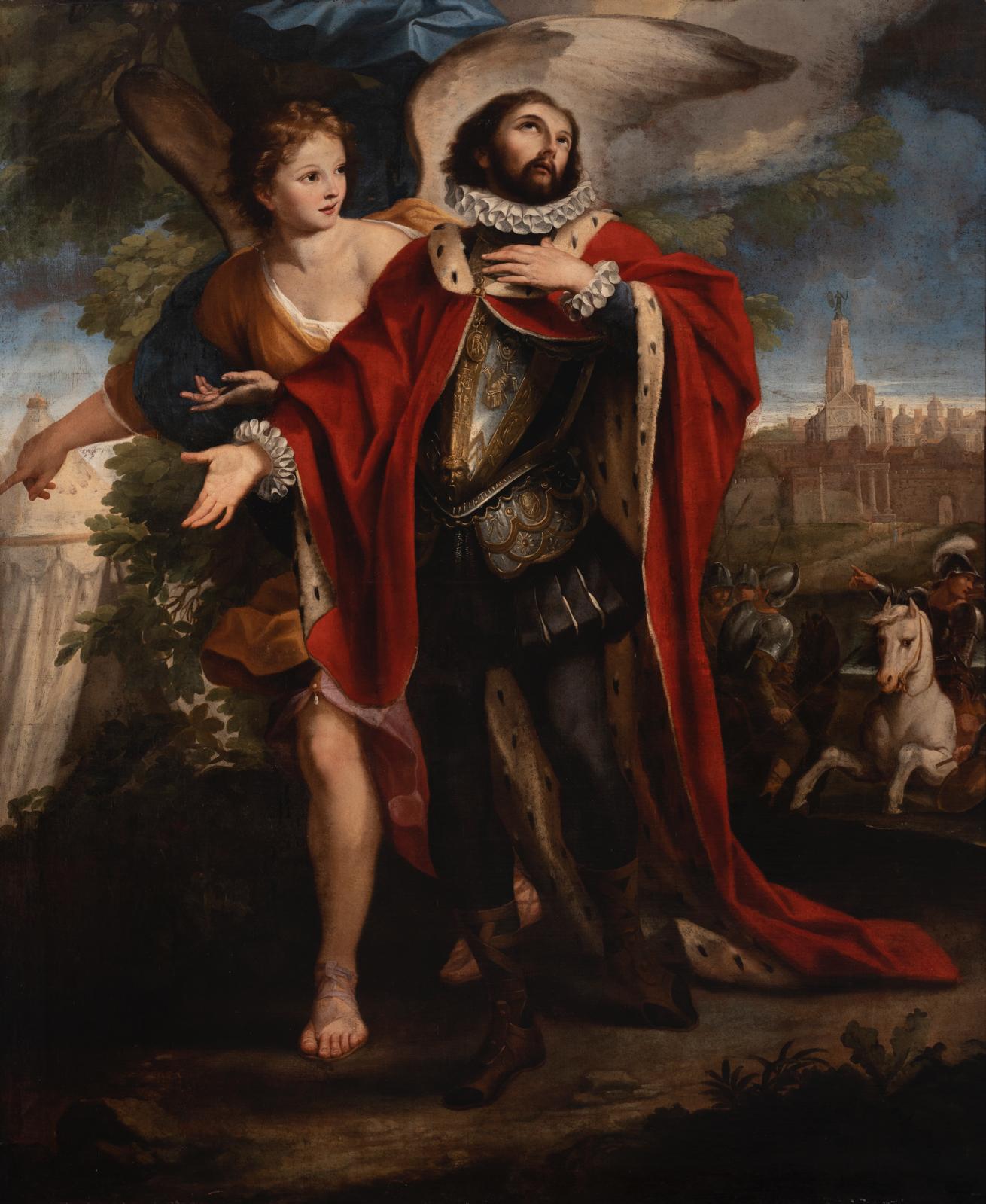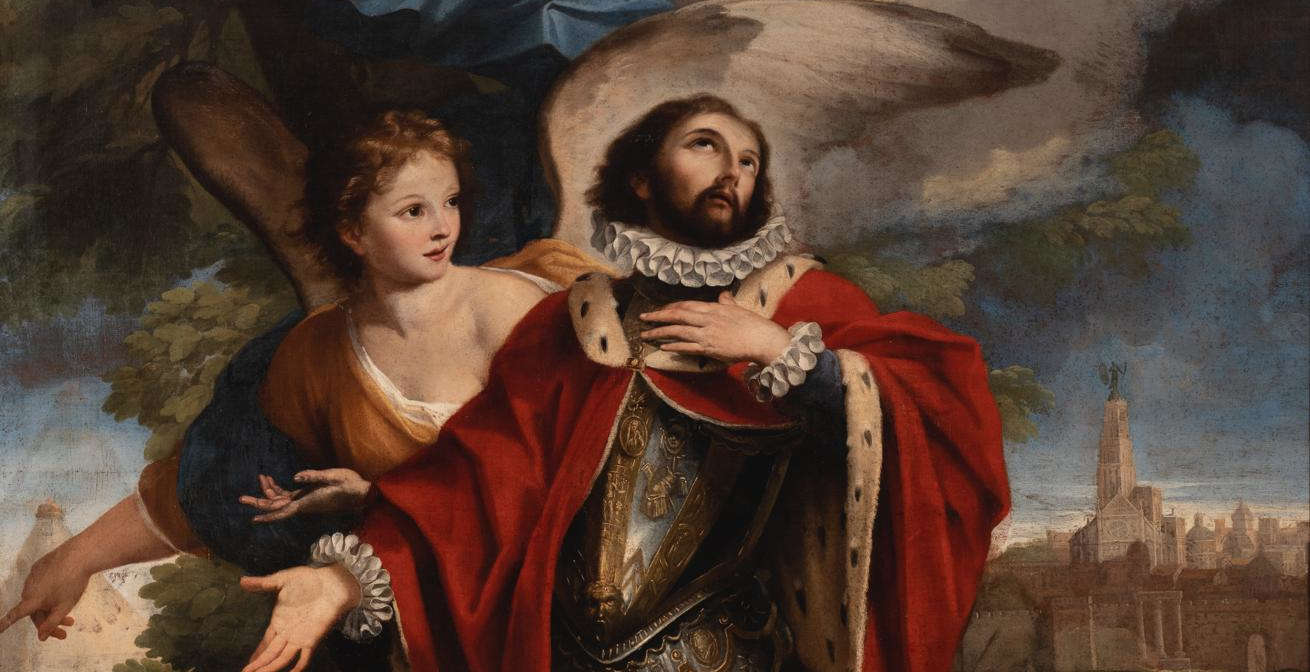In Spain , an important purchase by the Chapter of Seville Cathedral, which has bought, from the Madrid gallery Magalhaes & Santos, a relevant painting attributed to Ludovico Gimignani (Rome, 1643-1697), with a subject closely linked to the history of the city and the cathedral itself: it is Saint Ferdinand led by the angel during the siege of Seville, a large-format work (241 x 201 cm) that significantly enriches the Cathedral’s artistic heritage.
The acquisition of this painting is of special significance for Seville Cathedral, not only because of its artistic quality, but also because of the deep historical and devotional bond that the figure of Saint Ferdinand has with the city and its main temple. The work is thus integrated into the Cathedral’s heritage, helping to spread the memory of the holy king and his decisive role in the history of Seville and peninsular Christianity.
The composition depicts the Castilian monarch, later canonized as Saint Ferdinand, at a key moment of the Reconquista. The king is accompanied by an angel who guides him, emphasizing the providential and sacred dimension of his military and political enterprise. The drama of the scene, the expressive power of the figures, and the delicate treatment of light and color fully reflect the Roman Baroque style in which Gimignani trained and developed his career.

Depictions of King Ferdinand were rare until the late 17th century, but became increasingly popular from 1671 onward. In fact, his canonization that same year by Pope Clement X led to the development of a hagiographic iconography that, although not widely disseminated outside Spain, enjoyed great success and popular fervor, particularly in Seville and the rest of Andalusia.
After his canonization and the numerous festivities celebrated in Seville, the city’s cathedral chapter drew up a relatively precise iconographic program (session of April 4, 1671), which stipulated that the saint should be depicted with a sword, known as a “Lobera,” in one hand and a globe in the other; he would wear the imperial crown, as well as a royal armor and cloak.
The original provenance of this painting may explain the iconographic differences. The saint wears armor, a cloak and a beard, but does not have the orb, sword and imperial crown. According to tradition, the painting was commissioned and executed in Italy to celebrate the canonization of King Ferdinand III and then sent to Spain for the occasion. It is clear that from Rome, where he painted the work, Gimignani was only partially familiar with the recommendations of the Seville ecclesiastical authorities and the iconographic conventions surrounding the depiction of the king. On the other hand, the silhouette of the Giralda, which majestically dominates the city, is easily recognizable, but closer examination reveals that the painter had no precise knowledge of the Almohad architecture of the tower, which he nevertheless depicts crowned by the statue of Faith.
 |
| Spain, Seville Cathedral acquires important painting by Ludovico Gimignani |
Warning: the translation into English of the original Italian article was created using automatic tools. We undertake to review all articles, but we do not guarantee the total absence of inaccuracies in the translation due to the program. You can find the original by clicking on the ITA button. If you find any mistake,please contact us.